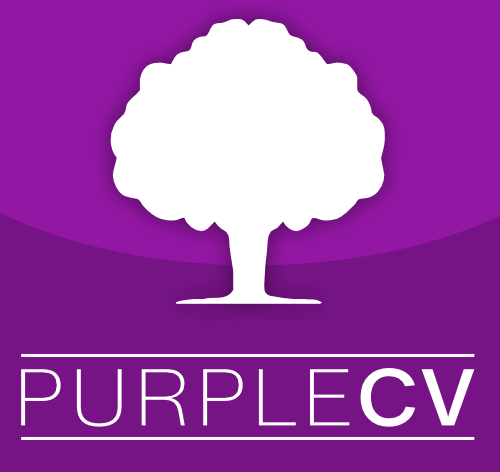Older people have a lot to offer later in their working lives. With life expectancy increasing and the Baby Boomer generation having access to technology and career-enhancing reskilling opportunities, those aged 50 and over are now well-positioned to launch new careers or re-enter the workforce.
In addition, technological advances and changes in how companies approach recruitment have allowed employers to view applicants without named details, such as gender or age. This has helped combat ageism in hiring practices, allowing older professionals to receive an equal shot at job opportunities that may have previously been unavailable due to prejudicial assumptions.
In light of these facts, it makes sense why employment rates for those aged 50–64 have grown so dramatically over the past few decades — from 57% in 1995 to 71% in 2021, according to The Department for Work and Pensions.
So if you're an adult over 50 considering a career change or wanting to restart your professional journey, you have more options now than ever, thanks largely to technological advances.
That said, older workers still experience barriers to entry when it comes to finding full-time jobs or even working on a self-employed basis.
What are the barriers older adults face when they look for job opportunities?
Older workers looking for job opportunities may face several barriers during their job search. For example, a study found that older workers experienced stress, lack of support, and an overemphasis on qualifications over skills when looking for jobs.
Employers must recognise these challenges and create more welcoming workplace environments where age is not viewed as a negative factor but rather an asset with transferable skills and valuable experience.
Ageism during the job search process
Many employers still discriminate against older workers due to outdated preconceptions about their abilities or work ethic; this creates a significant barrier that should not exist in today’s job market.
In fact, age is one of the main contributing factors when it comes to fears associated with the job search process. Research from LinkedIn shows that 23% of respondents identified it as the most significant barrier to getting a job, ranking above gender and ethnicity.
A detrimental impact on mental health and general well-being
Stress and a perceived lack of support can be two major obstacles for older adults when seeking employment. A significant source of stress is the fear that their skills may be outdated or irrelevant to employers.
The physical demands posed by some jobs may also be prohibitive for many older candidates; those that require long hours standing or lifting heavy objects may be out of reach for some older people.
An overemphasis on qualifications by employers
An overemphasis on qualifications can make it difficult for older people to show they have the knowledge and experience needed for certain positions. They may have the needed skillset to perform the job but not the required academic qualifications.
Additionally, older adults often lack access to mentorship opportunities or supportive networks that could help them get back into the workforce. Things like work experience schemes, career advice, mentoring, and apprenticeships are often aimed at younger people rather than older career changers.
What are the benefits of starting a job in later life?
Starting a job in later life can provide several benefits to older people and society as a whole. For individuals, having meaningful work can foster a sense of purpose and give them a reason to get up in the morning.
Having a job, even a part-time job, can also help provide structure to their day, enabling them to connect with their communities and make new friends. Also, many people find that having a part-time role allows them to develop new skills or hone existing ones.
A new job can create that all-important work-life balance that could lead to a healthier lifestyle and a sense of purpose. Productive ageing has been linked with improved physical health, mental well-being, social engagement and even longevity among those who complete their working years in good health.
Also, cost of living concerns are causing additional stress to many pensioners who may have to rely on limited pension funds to make ends meet. A job could provide financial freedom that allows relatively healthy older people to do more with their time.
Ultimately, engaging in a job later in life offers several benefits, from improved financial security to increased physical activity levels, which result in healthier lifestyles overall.
Can older job seekers make a career change in later life?
Making a career change in later life can be daunting, especially if you are an older job seeker. But the good news is that you can do it with the right preparation and planning! There are many ways you can make yourself a more attractive candidate, but here are just a few of our top tips.
Craft a tailored cover letter highlighting your transferable skills
One of the best ways to make a successful career change is to craft a killer cover letter. This document should highlight your transferable skills – for example, if you have experience in project management, you can use this in many different roles.
Thinking creatively and considering where else your skills may be applicable outside the industry you worked in previously is essential.
Make LinkedIn your digital networking tool
You can use LinkedIn to search for potential job vacancies and connect with recruiters who specialise in assisting individuals making a career switch at an older age.
Whether you've been affected by redundancy or are simply looking for a change, many industries are experiencing talent shortages and would love to hear from you.
LinkedIn is also a brilliant way to create a digital resume and connect with people in your desired industry who may be willing to answer your questions.
Upskill through online courses on LinkedIn, Coursera or Codecademy
There are many online course providers that can help you upskill and prepare for your new role. So if you’re feeling restless and like you need a challenge, you could pursue a course through LinkedIn Learning or Coursera. Some of these courses are led by recognised institutions like universities and can lead to qualifications. Others help you brush up on your interviewing and CV writing skills.
You can often find free online classes if you have little spare money to spend on courses. Or, you could download e-books from your local library or watch educational YouTube videos.
Alternatively, if you're looking to switch to the tech field and want to become a software developer, for example, online boot camps like Codecademy provide a way to learn new coding languages and build portfolios.
These are just some ways technology has made it easier than ever to upskill and change career paths.
Use LinkedIn as a social media platform for professionals
While LinkedIn can be your digital learning platform and online resume, it has a lot of other uses. Many people on LinkedIn now post industry-relevant content from their own profiles to spark conversation. A great way to get noticed by the right people is to comment thoughtfully and engage in these conversations.
Once you've spent some time on the platform, you may wish to try posting your own content to attract the attention of potential employers or even future colleagues.
Whether you’re looking to find a part-time role or a full-time opportunity or even start your own consultancy, LinkedIn is a great way to connect with the right people.
Case study: How SKEELZ is helping people aged 55+ find meaningful skills-based careers
SKEELZ is a revolutionary hiring methodology developed and implemented by VeHadarta. SKEELZ looks beyond traditional hiring criteria such as degree completion and previous employment history to provide employers with an accurate assessment of job seekers' skills and competencies.
It is designed to help "young seniors" (people aged between 55-75) find employment opportunities that they may have otherwise been excluded from due to ageism or other biases which may exist in the workplace.
VeHadarta's CEO, Rivi Beller, told Pension Times: "Ageism in the work market blocks older workers when they are looking for a job opportunity that will improve their quality of life, health, and financial situation.
“Using the metrics of skills in the core of the hiring system will create an age-blind situation where a potential employee is judged by the skills he amassed during his lifetime rather than his age.”
The SKEELZ methodology is based on the concept of "skills-based hiring". It uses an AI platform developed in partnership with retrain.ai to map job seekers' acquired skills against employers' specified hiring needs. This ensures that matches between job seekers and employers are made accurately, giving older workers a greater chance of being considered for positions they might otherwise be turned away from due to their qualifications.
How technology helps facilitate later-life employment
Technology has been a game-changer for later-life employment. It has empowered older professionals to access job opportunities that may have previously been unavailable and offers them the ability to upskill through online courses that bolster their transferable skills.
Software that encourages blind hiring practices is slowly emerging. This type of technology is tackling ageism and helping older people find jobs that bring them lots of benefits.
Working later in life can benefit one's physical and mental health due to improved financial security, increased motivation through acquiring new skills, and heightened opportunities for social interaction.
Social networking platforms like LinkedIn provide those over 50 with additional ways to connect with potential employers, which is essential in today's digital world.
Ultimately, technology is providing older professionals with new opportunities to not only survive but thrive in their careers.







